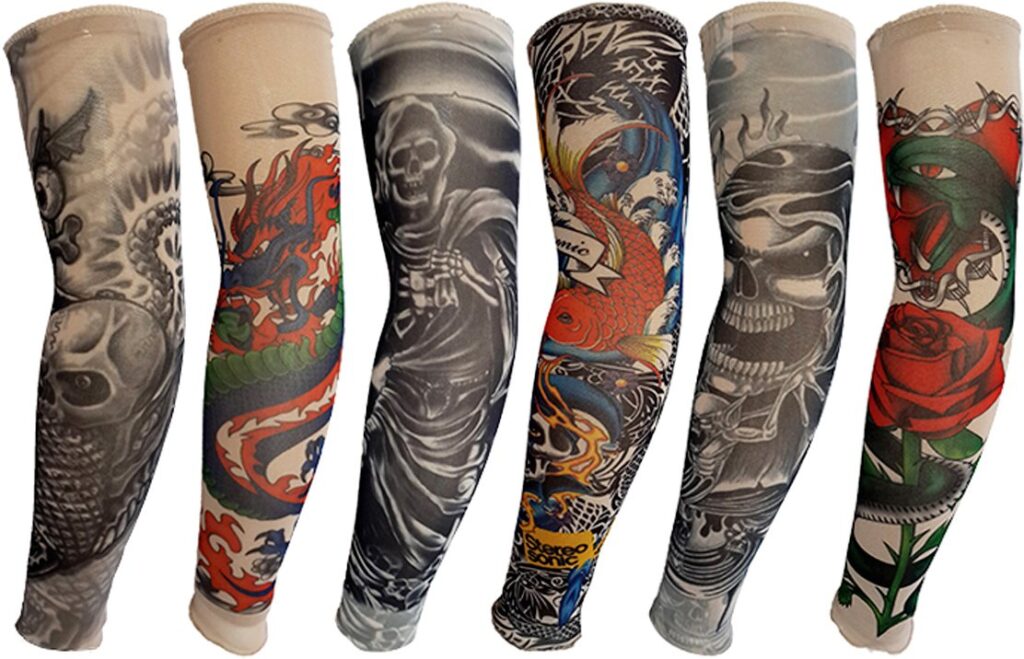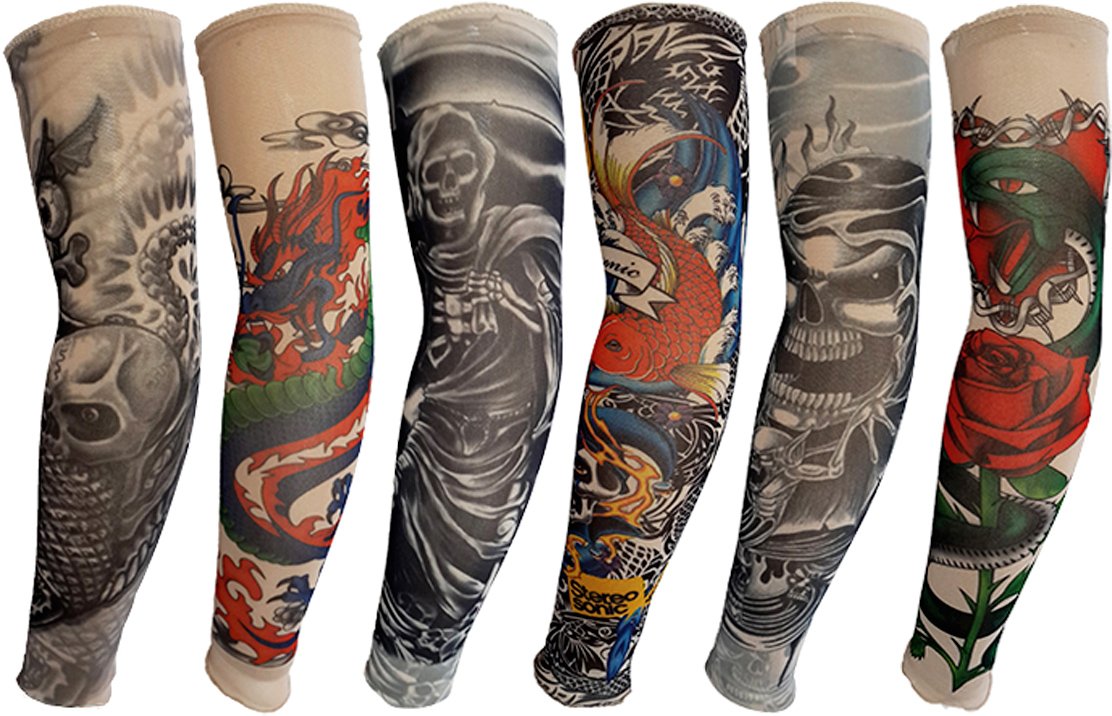
Sleeve Tattoo: A Comprehensive Guide to Designs, Styles, and Aftercare
A sleeve tattoo is a large tattoo, or a collection of smaller tattoos, that covers a person’s arm from shoulder to wrist, resembling a sleeve. It’s a significant commitment, both artistically and financially, and requires careful planning and consideration. This comprehensive guide will delve into the various aspects of sleeve tattoos, from design ideas and popular styles to the application process and essential aftercare tips.
Understanding Sleeve Tattoo Styles
The beauty of a sleeve tattoo lies in its versatility. You can choose from a wide range of styles, each offering a unique aesthetic and storytelling potential. Here are some of the most popular options:
- Japanese Sleeve Tattoos: Known for their intricate designs, vibrant colors, and symbolic imagery, Japanese sleeve tattoos often feature mythical creatures like dragons, koi fish, and phoenixes, along with elements of nature such as cherry blossoms and waves. These designs tell a story and carry deep cultural meaning.
- Tribal Sleeve Tattoos: Inspired by ancient tribal art, these sleeve tattoos typically incorporate bold, geometric patterns and black ink. They can represent heritage, strength, and connection to ancestral roots.
- Black and Grey Sleeve Tattoos: This style focuses on shading and contrast to create depth and dimension. Black and grey sleeve tattoos can depict a variety of subjects, from portraits and landscapes to abstract designs.
- Realism Sleeve Tattoos: These tattoos aim to replicate real-life images with incredible detail. Realistic sleeve tattoos can feature portraits of loved ones, animals, or scenes from nature.
- Geometric Sleeve Tattoos: Combining precise lines, shapes, and patterns, geometric sleeve tattoos create visually striking and often symmetrical designs. They can be abstract or incorporate meaningful symbols.
- Watercolor Sleeve Tattoos: Mimicking the look of watercolor paintings, these sleeve tattoos use soft, blended colors to create a delicate and artistic effect.
Planning Your Sleeve Tattoo Design
Before you even start looking for a tattoo artist, it’s crucial to plan your sleeve tattoo design. This involves considering several factors:
- Theme: What overall message or story do you want your tattoo to convey? Choose a theme that resonates with you and reflects your personality or interests.
- Imagery: What specific images or symbols will you incorporate into your design? Research different symbols and their meanings to ensure they align with your intended message.
- Placement: Do you want a full sleeve tattoo that covers your entire arm, or a half sleeve that extends from the shoulder to the elbow? Consider the visibility of your tattoo in different settings.
- Color Palette: Will you opt for a black and grey design, or incorporate vibrant colors? Think about how the colors will complement your skin tone and the overall aesthetic of the tattoo.
- Flow and Composition: How will the different elements of your design connect and flow together seamlessly? Consider the overall composition of the tattoo and how it will wrap around your arm.
It’s helpful to gather inspiration from various sources, such as tattoo magazines, online galleries, and social media platforms. Create a mood board with images and ideas that you like. Don’t be afraid to experiment with different styles and concepts until you find something that truly resonates with you.
Choosing the Right Tattoo Artist
Selecting the right tattoo artist is paramount to achieving a stunning sleeve tattoo. Look for an artist who specializes in the style you’re interested in and has a strong portfolio of completed sleeve tattoos. Consider these factors:
- Experience: How long has the artist been tattooing, and how many sleeve tattoos have they done?
- Style: Does the artist’s style align with your vision for your sleeve tattoo?
- Portfolio: Does the artist’s portfolio showcase high-quality work and attention to detail?
- Reputation: What do other clients say about the artist’s work and professionalism? Read online reviews and testimonials.
- Consultation: Schedule a consultation with the artist to discuss your design ideas and ask any questions you may have.
During the consultation, the artist can provide valuable feedback on your design and help you refine your ideas. They can also assess the feasibility of your design and estimate the cost and time required to complete the tattoo. A skilled artist will work with you to create a custom sleeve tattoo that is tailored to your unique anatomy and preferences. [See also: Tattoo Artist Selection Guide]
The Tattoo Application Process
Getting a sleeve tattoo is a significant commitment, and the application process can take multiple sessions, depending on the size and complexity of the design. Here’s what you can expect:
- Preparation: The artist will clean and shave the area to be tattooed. They may also apply a stencil of the design to your arm.
- Outlining: The artist will start by outlining the main elements of the design using a tattoo machine.
- Shading and Coloring: Once the outline is complete, the artist will begin adding shading and color to create depth and dimension.
- Breaks: It’s important to take breaks during long tattoo sessions to stretch, hydrate, and rest.
- Aftercare Instructions: After each session, the artist will provide you with detailed aftercare instructions to ensure proper healing.
The pain level associated with getting a sleeve tattoo varies depending on individual pain tolerance and the location of the tattoo. Areas with more bone and less muscle tend to be more sensitive. It’s important to communicate with your artist throughout the process and let them know if you need a break.
Essential Aftercare Tips for Your Sleeve Tattoo
Proper aftercare is crucial for ensuring your sleeve tattoo heals properly and looks its best. Follow these essential tips:
- Keep it Clean: Gently wash the tattooed area with mild soap and water twice a day.
- Apply Ointment: Apply a thin layer of fragrance-free, alcohol-free ointment to keep the tattoo moisturized.
- Avoid Sun Exposure: Protect your tattoo from direct sunlight by wearing loose-fitting clothing or applying sunscreen.
- Don’t Pick or Scratch: Avoid picking or scratching the tattoo, as this can lead to infection and scarring.
- Stay Hydrated: Drink plenty of water to keep your skin hydrated and promote healing.
- Avoid Soaking: Avoid soaking the tattoo in water for extended periods, such as swimming or taking baths.
The healing process for a sleeve tattoo typically takes several weeks. During this time, it’s normal for the tattoo to scab, peel, and itch. Resist the urge to pick at the scabs, as this can damage the tattoo and increase the risk of infection. If you experience any signs of infection, such as redness, swelling, or pus, consult a doctor immediately. [See also: Tattoo Aftercare: A Step-by-Step Guide]
The Cost of a Sleeve Tattoo
The cost of a sleeve tattoo can vary significantly depending on several factors, including the artist’s hourly rate, the size and complexity of the design, and the number of sessions required. Generally, you can expect to pay several hundred to several thousand dollars for a full sleeve tattoo. It’s important to discuss pricing with your artist upfront and get a clear estimate before starting the tattoo process.
Conclusion: Embracing the Art of the Sleeve Tattoo
A sleeve tattoo is a powerful form of self-expression that allows you to showcase your personality, interests, and beliefs through art. By carefully planning your design, choosing the right artist, and following proper aftercare procedures, you can ensure that your sleeve tattoo becomes a cherished piece of body art for years to come. Embrace the process, enjoy the journey, and wear your sleeve tattoo with pride.

